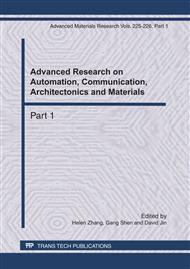p.1041
p.1045
p.1050
p.1054
p.1059
p.1063
p.1067
p.1071
p.1075
Mobile Law Enforcement System for Industry and Commerce Bureau Based on Windows Mobile Platform
Abstract:
Traditional law enforcement mode of industry and commerce bureau(ICB) mainly depends on manual operation, which affects the working efficiency. In this paper, an intelligent mobile law enforcement system based on Windows Mobile platform is designed according to the characteristics of ICB law enforcement such as mobility, sudden and emergency. The International Mobile Equipment Identity (IMEI) and Secure Socket Layer(SSL) authentication technology are used to identify the legitimacy of mobile devices in order to ensure the reliability and safety of the system, furthermore to ensure this system connects seamlessly to current ICB system. This system has been applied in a city, and achieved a good effect.
Info:
Periodical:
Pages:
1059-1062
Citation:
Online since:
April 2011
Authors:
Keywords:
Price:
Сopyright:
© 2011 Trans Tech Publications Ltd. All Rights Reserved
Share:
Citation:


